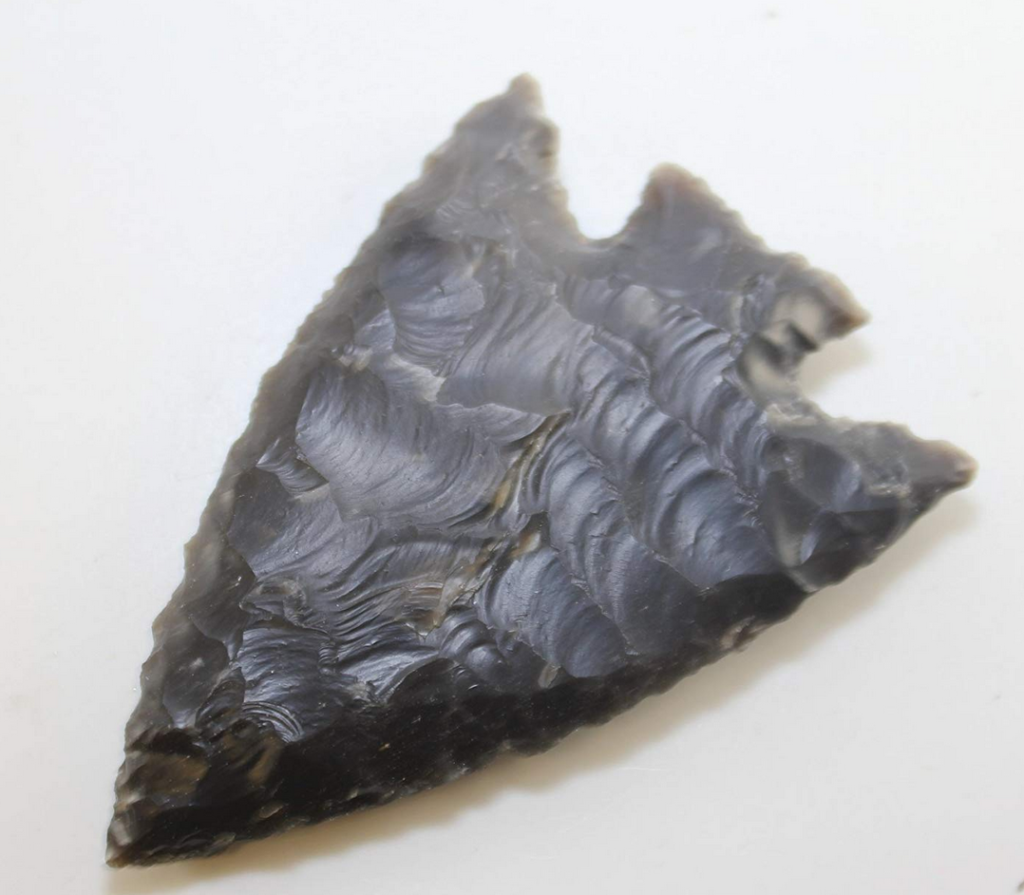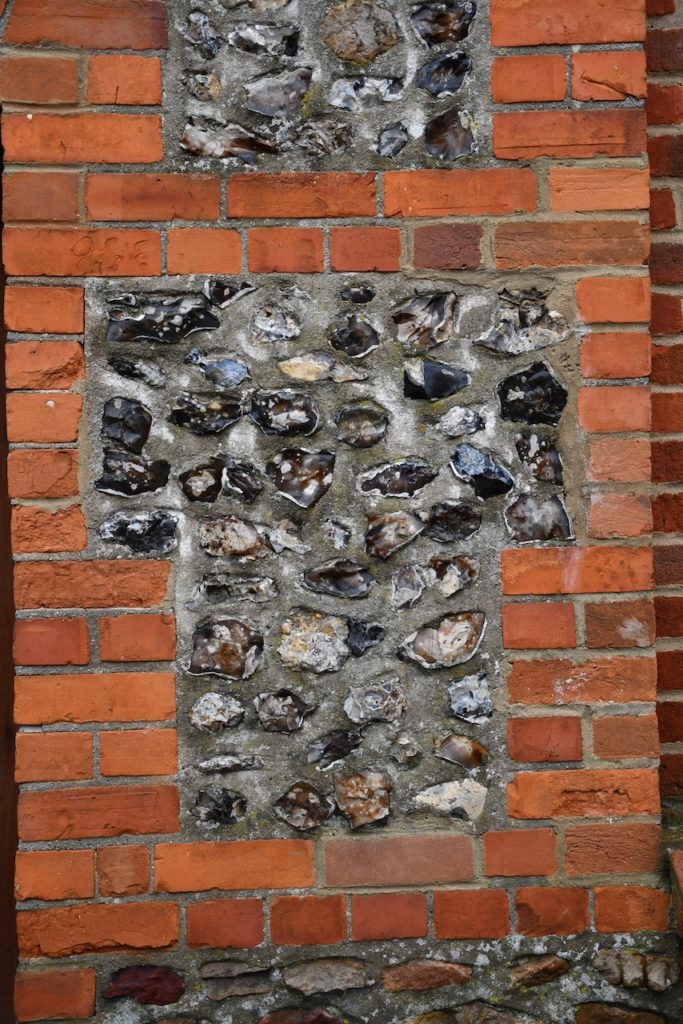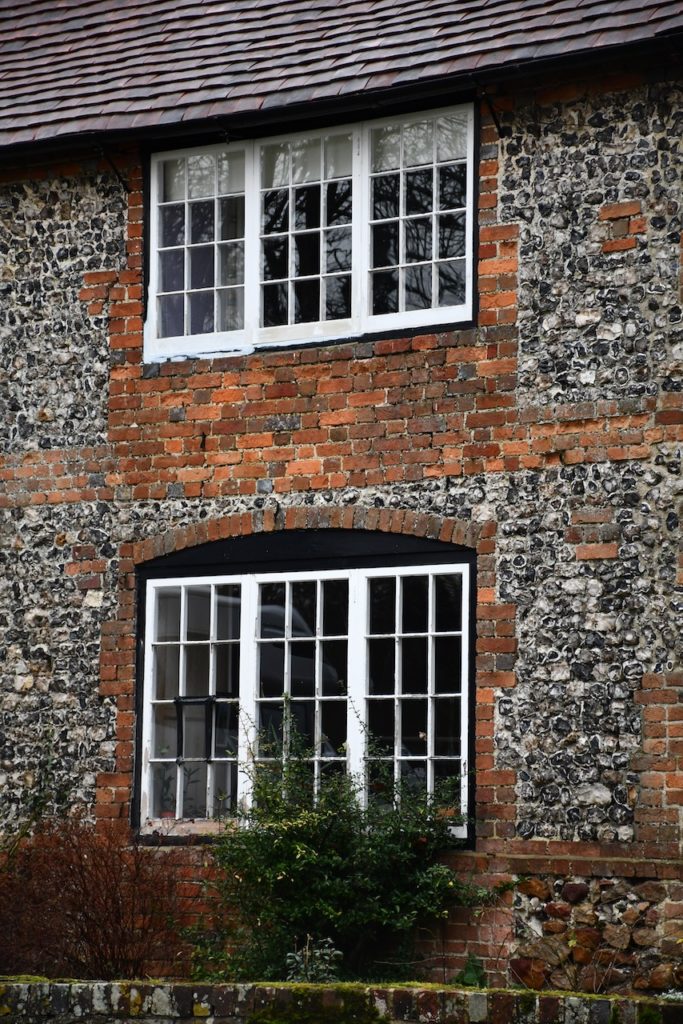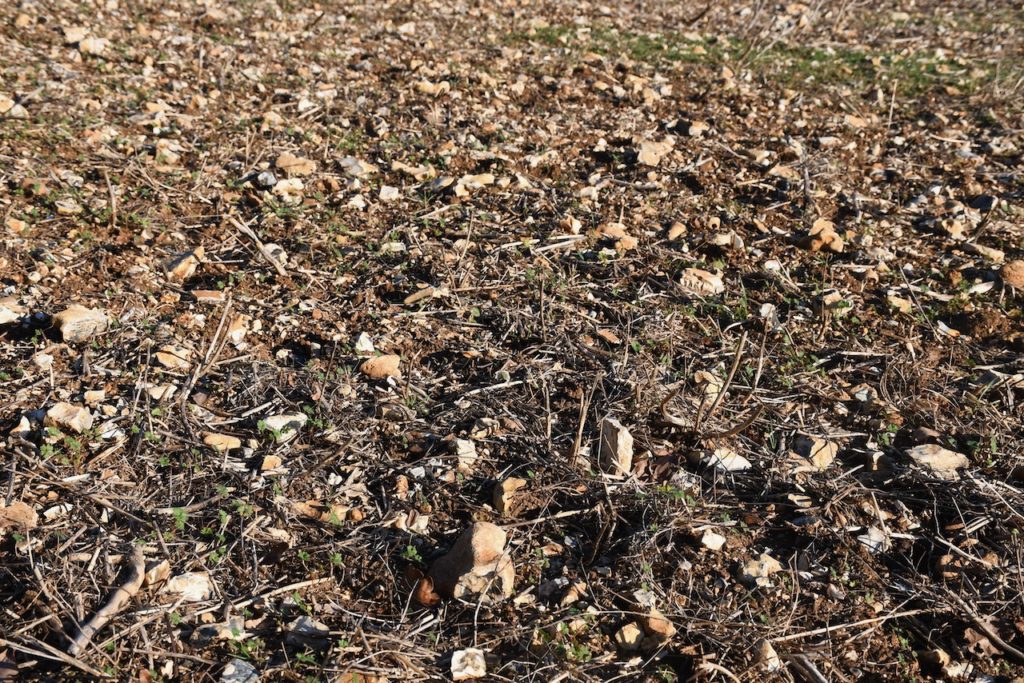
Flint can be found all around Lambourn and the Lambourn Valley. It typically has a white outer coating and a dark, almost black, centre. It is made up of crystals so small they cannot be seen in a microscope – this is called a cryptocrystalline structure and is not far removed from diamond in terms of hardness. Flint is a sedimentary rock made over 100 million years ago at the same time as the chalk bedrock.
Small sea animals such as sponges use silica (a kind of sand) from the sea water to form their skeletons, much in the way humans use calcium to build our bones. When the sea animal dies the organic parts decay and the tiny deposits of silica sink to the sea bed and become part of the sediment.
Under certain conditions of depth and the presence of compounds such as hydrogen sulphide and oxygen a chemical reaction takes place where hydrogen ions are released. These in turn dissolve the chalk and increase the carbonate ions which act as a seeding agent for the pure silica which makes up flint. The silica is initially in the form of crystalline opal but gradually transforms to flint with pressure and time.
The chalk seabeds are relatively soft and animals such as shells and worms burrowed into them making small chambers as living spaces. When the animal dies, the burrows fill with sediment and it is this sediment which is slightly different from the surrounding chalk which is preferentially turned to flint. Hence the smooth nodules seen on most flint rocks before they are split or broken.
Flint is often found in layers within the chalk. Sometimes these layers can be as thin as 30 centimeters. Whilst there is no definite conclusion as to why these layers are formed, one theory is that chalk sedimentation happens in cycles and that the flint follows these cycles where teh chemicals are optimal for the reaction to start. Remember, all this happened 100 million years ago when Lambourn was deep at the bottom of the sea.
Flint is extremely hard and can be broken into small fragments which have very sharp edges. These flint fragments were among the earliest tools used by man as cutting edges, in axes or as arrowheads.

Flint was also used as a building material. Its hard surface is ideal for keeping water away although its hard nature and irregular shape makes it difficult to shape and work with. Most flint walls use flints which have been knapped which means they have been cut and shaped. Depending on how wealthy the owner was depends on how much time and effort was taken to cut the flint leading to some examples of neatly knapped and even squared flints and some examples of roughly halved flints used in walls.


Through ploughing and turning of soil, the flint fragments tend to make their way to the top of the soil in the fields around Lambourn. A field covered in flints is a common sight and whilst not ideal for modern farming brings the benefit that it stops the topsoil being washed away in strong rains. The sharp edges of the flints can be a nuisance to farmers and motorists whose car and tractor tyres are sometimes punctured.





